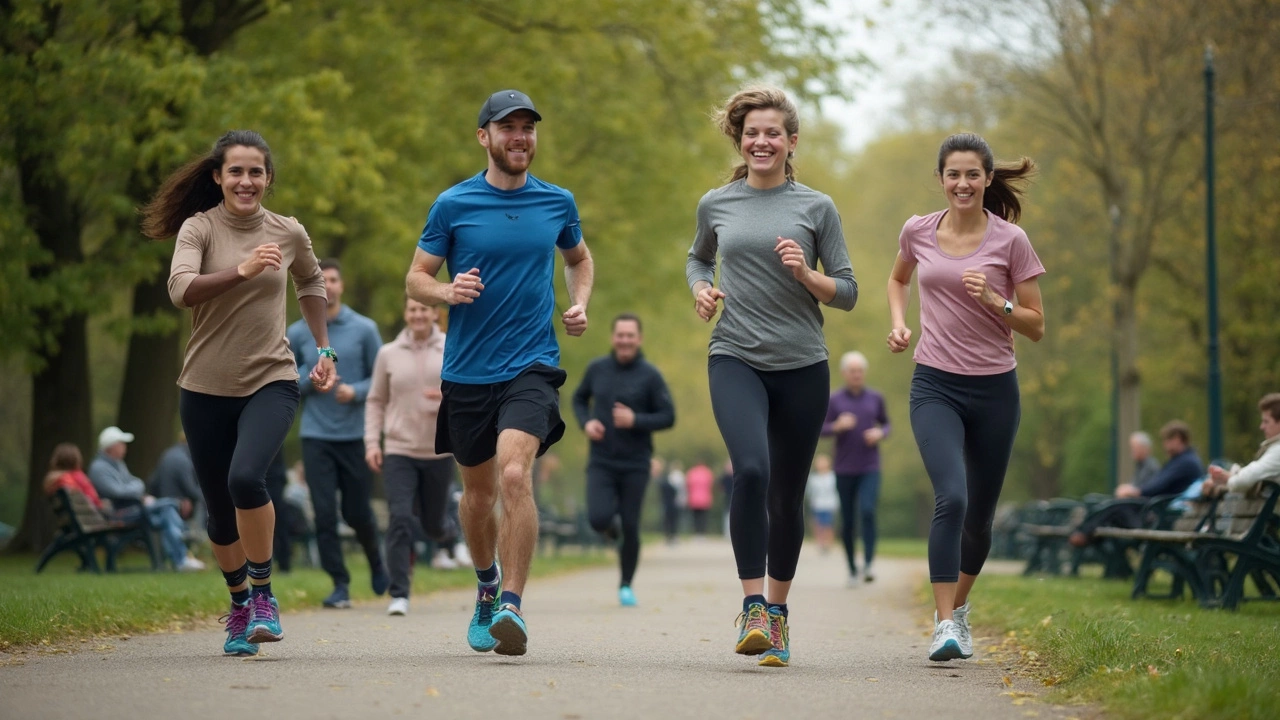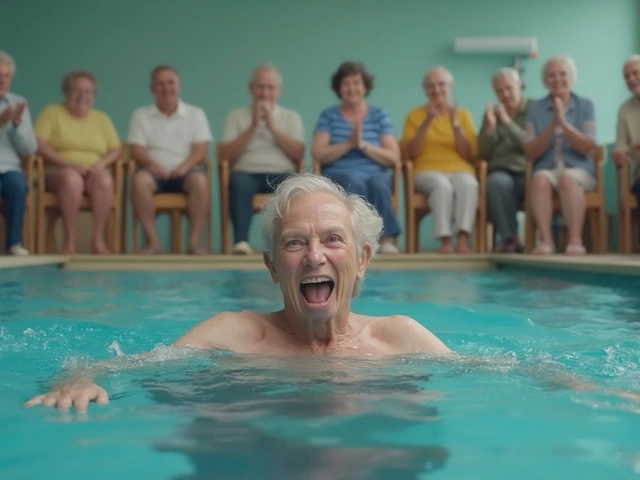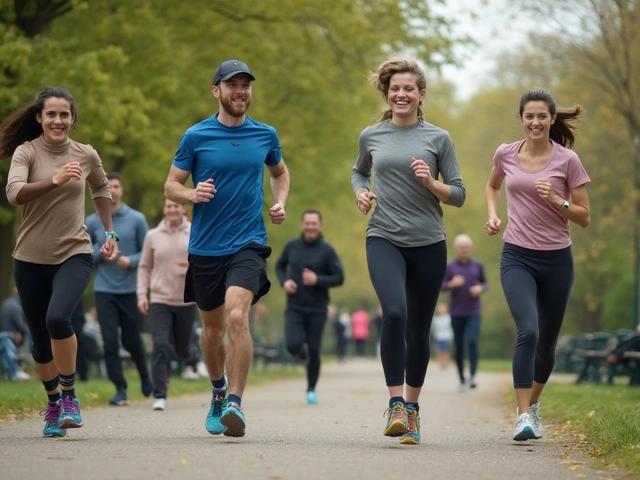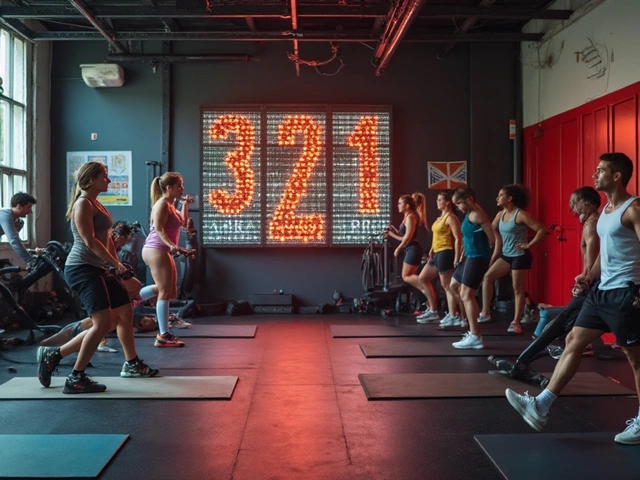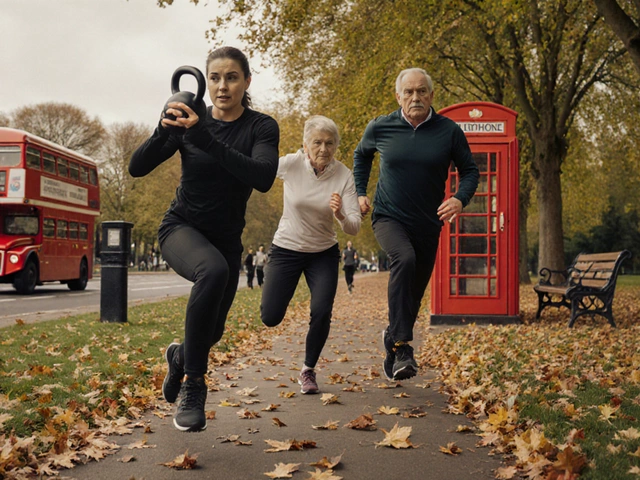Most folks want to look and feel stronger, but fitness can seem like a mystery. The truth? You don’t need fancy routines or ten different supplements to get a body that works for you. What matters is doing what you’ll stick with, week in and week out. Not sure where to start? Don’t sweat it—literally. You just need to stay active, add a bit of strength work, and eat with intention. It’s more about habits than heroics.
If you feel stuck in a rut, know that quick fixes are usually a trap. That “summer body” plan? It rarely sticks around until fall. Real strength and fitness come from small, repeatable things you can work into daily life. So if you can fit a 20-minute brisk walk into your lunch break, that’s already a win. And if you’re picking up a pair of dumbbells twice a week, you’re doing way more good than you think. Simple moves, done often, make all the difference.
- Move, Don’t Overthink It
- Strength Training Made Simple
- Eat to Fuel, Not Just Fill
- Habits That Build Real Results
Move, Don’t Overthink It
If you want results, don’t get stuck waiting for “perfect” motivation. The big secret? Movement is not about doing something extreme—it's about doing fitness on your own terms. The Centers for Disease Control and Prevention says adults should aim for at least 150 minutes of moderate exercise a week. That sounds like a lot, but it’s just 30 minutes, five days a week. Even short bursts count; three ten-minute walks are as good as one thirty-minute session.
There’s real science here too. Look at this breakdown of different activities and calories burned for someone about 155 pounds:
| Activity | Calories Burned (30 min) |
|---|---|
| Walking (brisk pace) | 140 |
| Jogging | 290 |
| Cycling (leisure) | 145 |
| Swimming (slow) | 215 |
See how even basic stuff like brisk walking or cycling makes a dent? There’s no need to sign up for ultramarathons or hit the gym every day.
Here’s how to make staying active a habit:
- Schedule movement like you’d schedule a meeting. Put it in your calendar.
- Mix it up so it stays interesting—try hiking one day, biking the next.
- Use your environment: take the stairs, park further away, do squats while you watch TV.
- Walk whenever possible. Two ten-minute walks a day beats zero any day.
You don’t need flawless technique or fancy gear. Just move, as often as you can. Those small actions stack up over time and keep your body working the way you want it to.
Strength Training Made Simple
Strength training isn’t just for guys who live at the gym or folks chasing biceps as big as their head. If you want to stay fit and tough as you age, it should be part of your week. A 2023 finding in the journal JAMA Network Open showed that doing strength exercises just two times a week dropped your risk of early death by up to 20%. That’s pretty motivating, right?
You don’t need a full squat rack, either. Bodyweight moves—like push-ups, planks, lunges, or squats—kick off real results, and you can do them right in your living room. Resistance bands and basic dumbbells are fine if you want a little extra burn. Aim for at least two strength sessions a week. Mix movements that work your legs, core, back, and arms.
"Strength training isn’t about getting huge. It’s key for everyday energy, joint health, and keeping your body ready as you get older." — Dr. Jordan Metzl, sports medicine physician
A simple routine could look like this:
- 10-15 bodyweight squats
- 10 push-ups (on knees is fine)
- 20 walking lunges (10 per leg)
- 30-second plank
- Repeat 2-3 times, rest as needed
If you do strength moves slowly and with control, you’ll pick up muscle faster (and stay safer) than rushing. Focus on form, not on looking tough. If you bump up the challenge a bit each week—more reps, a bit more weight, or an extra set—you’ll see steady progress without burning out.
| Exercise | Main muscles worked | Calories burned (30 min, 70kg/154lb adult) |
|---|---|---|
| Bodyweight Squats | Legs, glutes | 130 |
| Push-ups | Chest, arms, core | 170 |
| Planks | Core | 120 |
| Lunges | Legs, glutes, core | 150 |
You don’t level up by going heavier every single session. Track how you feel, back off if you’re sore, and celebrate every new rep you add. Sticking with it is way more important than chasing PRs every time.
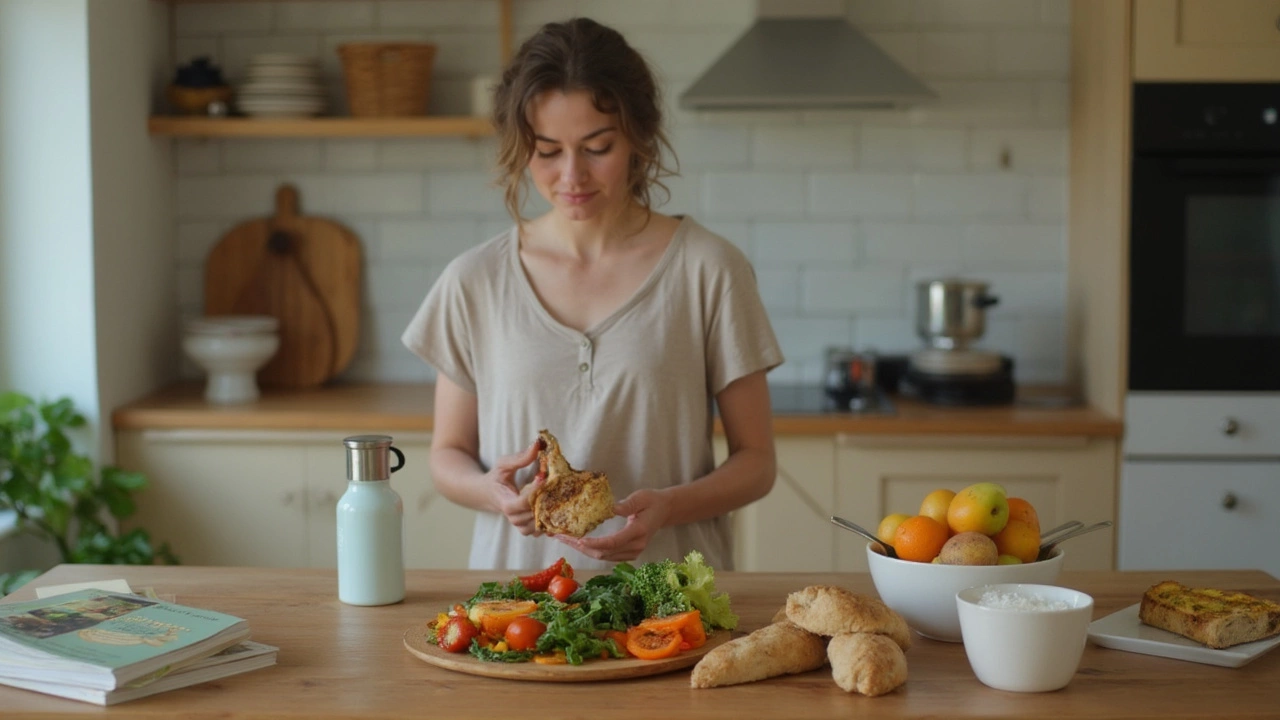
Eat to Fuel, Not Just Fill
What you eat can make or break your fitness journey. You don’t need an extreme diet, but you do need food that actually helps your body do what you need it to do. Think about meals as fuel, not just as something to quiet hunger. If you want more energy for workouts or just everyday life, your food choices matter, big time.
Aim to get a balanced mix of protein, carbs, and healthy fats. Protein is the building block for muscle. Every meal should have some: chicken, fish, beef, eggs, Greek yogurt, tofu, or beans—take your pick. Carbohydrates aren’t the enemy; your body uses them for energy. Go for rice, oats, potatoes, fruit, or whole grains, and keep the candy or pastries to once-in-a-while treats. Fats help with hormone balance and keep you feeling satisfied. Avocados, olive oil, nuts, and seeds are all solid options.
For most people trying to keep a body both fit and strong, portion control beats obsessing over every calorie. Try using a smaller plate for meals. Fill half with vegetables, a quarter with lean protein, and the rest with carbs or grains. You’ll get a fuller plate visually, but avoid overeating. This trick actually works—people who do it usually eat less without even noticing.
- Drink enough water, especially if you exercise. Dehydration can make you feel tired and weak, no matter how well you eat.
- Don’t skip meals to “save calories.” Skipping food slows your metabolism and usually leads to overeating later.
- Watch out for sneaky sugars in drinks like soda, sweet teas, and fancy coffees. They add calories fast and mess with your energy levels.
One last thing—consistency counts more than meals that are perfect every single day. Don’t beat yourself up over a pizza night. What you do most of the time is what shapes your results, not what you do once in a while.
Habits That Build Real Results
Getting fit and staying strong isn’t about one crazy workout or eating salad for a week. It’s the small stuff you turn into habits that pay off over time. Science backs this up: the CDC says just 150 minutes of moderate exercise each week slashes health risks and keeps your body kicking longer. That’s about 22 minutes a day—way less than you might expect.
Let’s talk habits that actually stick and bring real change:
- Fitness routines work best when you set clear, simple goals. Maybe you want to hit 8,000 steps daily, or bench press your bodyweight by the end of the year. Break goals into bits, so you always know what today’s win looks like.
- Stack new habits onto stuff you already do. For example, do 10 squats after brushing your teeth or a plank while the coffee brews. Simple pairing makes fitness part of your normal routine.
- Track progress—old school pen and paper, a fitness app, or just snapping a picture once a week. Seeing even small changes keeps you hooked and honest about your efforts.
- Rest isn’t slacking. Your muscles actually grow and recover when you sleep or take a break from hard workouts.
It helps to keep your healthy habits visible: leave your walking shoes by the door, keep a water bottle within reach, or put prepared veggies at the front of the fridge. The easier you make healthy choices, the more you’ll do them.
| Habit | Benefit | How Often |
|---|---|---|
| 150 mins moderate exercise/week | Lower risk of heart disease by 35% | 5x a week |
| 7-8 hrs sleep/night | Improved muscle recovery and mental health | Daily |
| Meal prepping veggies | Better food choices and weight control | 2x a week |
Boredom kills more goals than failure. Change up workouts every few weeks, grab a buddy for accountability, or reward yourself for hitting milestones. Habits aren’t about willpower—they’re about making the good stuff easier and automatic.
